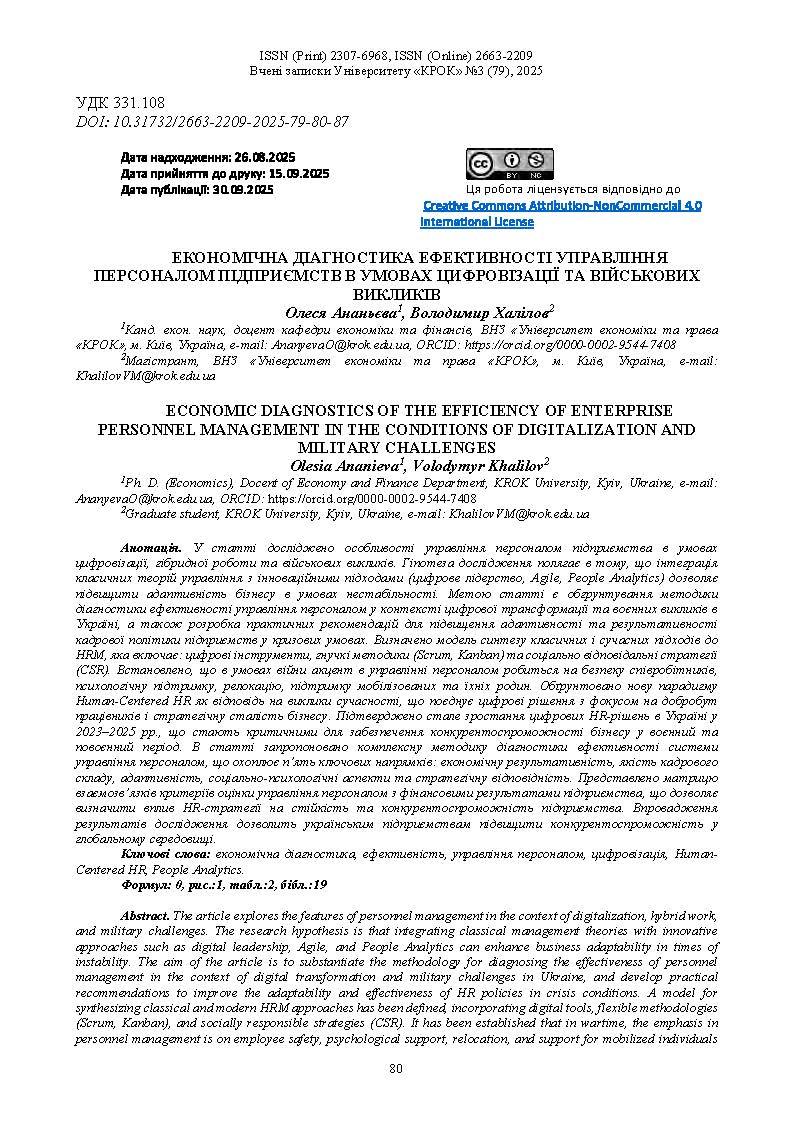ANALYSIS OF PROJECT FINANCING MODELS: OPPORTUNITIES FOR UKRAINE
DOI:
https://doi.org/10.31732/2663-2209-2025-79-88-98Keywords:
project financing, models, modeling, public-private partnership, BOT, BOOT, DBFO, PPP, infrastructure projects, investmentsAbstract
The article examines modern project financing models that are actively applied in the international practice of implementing infrastructure and investment projects. The essence and features of the most common models are analyzed – Build-Operate-Transfer (BOT), Build-Own-Operate-Transfer (BOOT), Design-Build-Finance-Operate (DBFO), Public-Private Partnership (PPP) and others. The key parameters of each model are identified, including the financing structure, risk-sharing mechanisms, the level of participation of the state and private investors, payback periods, and opportunities for attracting additional sources of capital. Special attention is paid to the comparative analysis of the advantages and disadvantages of the mentioned models, as well as the conditions for their effective application. Based on the generalization of foreign experience, the most effective approaches to project financing in the countries of the European Union, the USA, and Asia are identified. The article substantiates that for Ukraine, given economic instability, the need for infrastructure modernization, and limited budgetary resources, the most promising models are those that ensure effective risk sharing between the state and private investors, stimulate the inflow of foreign capital, and strengthen the financial sustainability of projects. Additionally, it is emphasized that under wartime conditions and during Ukraine’s post-war recovery, project financing becomes particularly relevant. Large-scale infrastructure destruction, budget deficits, and high investment risks necessitate the use of flexible public-private partnership models that combine state support with private investment. Both successful cases of concession projects (particularly in the port sector) and barriers that hindered the implementation of certain initiatives in the transport and utility sectors are examined. This made it possible to formulate practical recommendations for selecting optimal financing models, taking into account current wartime challenges and the prospects of post-war reconstruction. The results of the study can be used in the development of state infrastructure programs, the formation of public-private partnership strategies, and the improvement of the institutional environment for attracting investments to Ukraine.
Downloads
References
Про державно-приватне партнерство: Закон України від 1 липня 2010 р. № 2404-VI. URL: https://zakon.rada.gov.ua/laws/show/2404-17#Text
Кійко, Ю. (2023). Державно-приватне партнерство у фінансуванні інвестиційних проєктів. URL: https://ir.kneu.edu.ua/handle/2010/44035
Криклій, В. (2020). Укладено договір концесії морського порту «Ольвія». Міністерство інфраструктури України. URL: https://www.kmu.gov.ua/news/ukladeno-dogovir-koncesiyi-morskogo-portu-olviya-vladislav-kriklij
Круглов, В. (2022). Державно-приватне партнерство як інструмент інфраструктурного відновлення українських міст. Актуальні проблеми державного управління, 1(60), 63–77. URL: https://www.researchgate.net/publication/365744069_Derzavno privatne_partnerstvo_ak_instrument_infrastrukturnogo_vidnovlenna_ukrainskih_mist
Сас, Б., & Гетьман, О. (2011). Теоретичні основи проектного фінансування. Українська наука: минуле, сучасне, майбутнє, 16. URL: https://dspace.wunu.edu.ua/bitstream/316497/26404/1/Сас%20Б..pdf
Турченко, І. (2024). Сучасні моделі державно-приватного партнерства у сфері розбудови вітчизняної транспортної інфраструктури. Південноукраїнський правничий часопис. https://doi.org/10.32850/sulj.2024.4.11
Херсонський морський порт перейшов у концесію (2021). LB.ua. URL: https://lb.ua/economics/2021/12/24/501757_hersonskiy_morskiy_port_pereyshov.html
Чумаченко, О., & Стусь, Ю. (2024). Управління фінансовими ресурсами підприємств. Вчені записки Університету «КРОК», 4(76), 80–89. https://doi.org/10.31732/2663-2209-2024-76-80-89
Esty, B. C. (2004). Modern Project Finance: A Casebook. Hoboken, NJ: John Wiley & Sons.
Finnerty, J.D. (2013). Project Financing: Asset-Based Financial Engineering (3rd ed.). Hoboken, NJ: John Wiley & Sons. DOI: https://onlinelibrary.wiley.com/doi/book/10.1002/9781119204169
Yescombe, E.R. (2014). Principles of Project Finance. Financial Times Prentice Hall. URL: https://egcportalantigo.tcm.sp.gov.br/images/conteudo-palestras/curso-internacional/principles-of-project-finance.pdf
Румик, І., & Пилипенко, О. (2022). Фінансове забезпечення підприємств: можливості використання когнітивного моделювання. Вчені записки Університету «КРОК», (2(66), 44–52. https://doi.org/10.31732/2663-2209-2022-66-44-52
Mihus, I., Denysenko, M., Rumyk, I., Pletenetska, S., Laptiev, M., & Kupriichuk, V. (2021). Methodology of corporate financial diagnostics in the period of a crisis. AD ALTA: journal of interdisciplinary research, 11(1), Spesial Issue XV, 52-55. URL: http://www.magnanimitas.cz/ADALTA/110115/PDF/110115.pdf

Downloads
Published
How to Cite
Issue
Section
License

This work is licensed under a Creative Commons Attribution-NonCommercial 4.0 International License.

